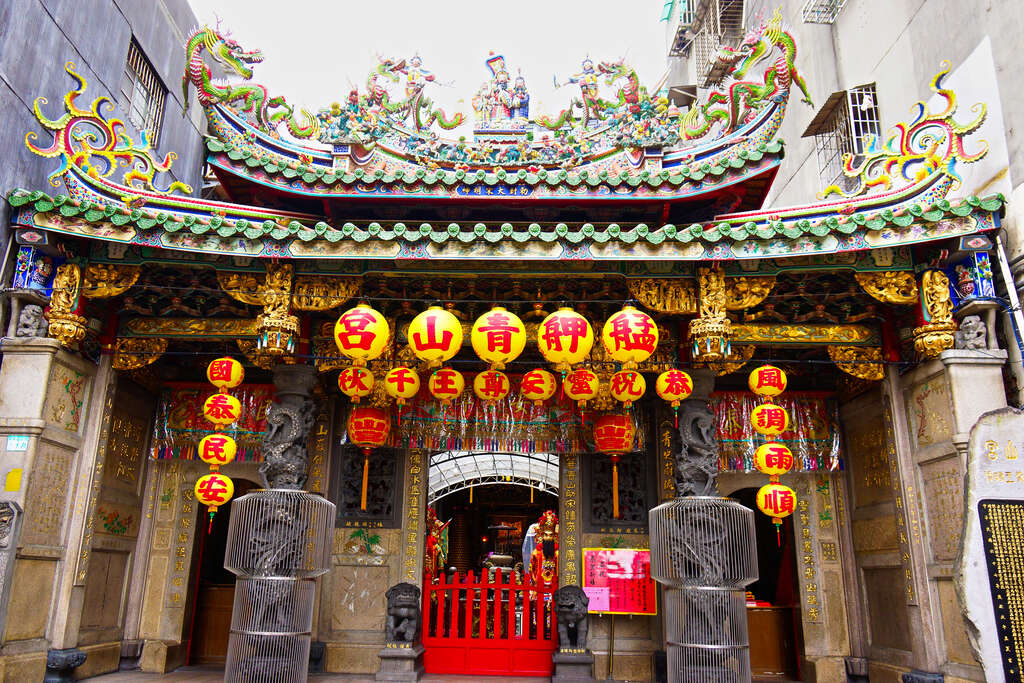Mengjia Qingshan Temple Introduction
General Zhang Gun, a commander under Sun Quan from the Three Kingdoms period, successfully governed Quanzhou Hui'an. After his death, local authorities established Qingshan Temple to honor him, and he is revered as King Qingshan or Ling'an Zunwang. King Qingshan is traditionally believed to have the power to dispel epidemics, administer justice, and reward the virtuous while punishing the wicked. The deities worshipped alongside him include the Eight Officials, General Jia, and General Suo. Mengjia Qingshan Temple, which has a history of over a hundred years, is a three-section temple made of a combination of wood and stone, having undergone multiple renovations that result in its exquisite appearance, such as the octagonal coffered ceiling, which is quite spectacular. The materials used for the renovations are richly referenced, with the stone columns and stone piles in the front hall sourced from the remnants of Yuanshan Shrine. Additionally, the statue of King Qingshan has sharp eyes that convey different feelings when viewed from various angles, allowing visitors to experience this directly. The birthday of King Qingshan is celebrated on the 23rd day of the 10th lunar month. It is said that two days prior, King Qingshan leads his subordinates to patrol the streets and alleys of the Mengjia area to bless the local people with peace. On the 22nd, a lively nighttime procession featuring the palanquin of the deity is held, complete with various performances such as the Eight Generals, drum ensembles, and bands. Families set up incense altars and offerings along the roadside, marking what is known as the "Mengjia Grand Worship," which is one of the three major temple festivals in Taipei, alongside the Xiahai City God Temple and the Baosheng Dadi's procession in Dadaocheng.















